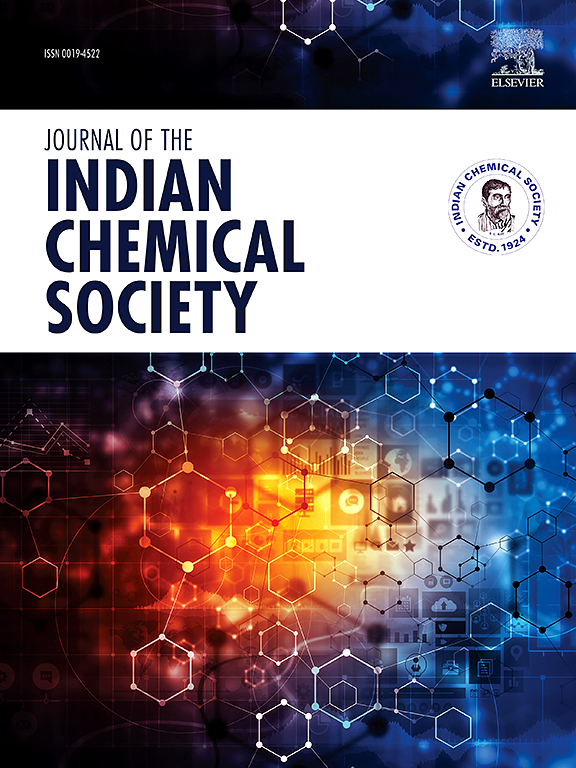通过连续的植物辅助氧化和生物制造方案,生物质衍生的ZnONPs从原始锌合成
IF 3.2
4区 化学
Q2 CHEMISTRY, MULTIDISCIPLINARY
引用次数: 0
摘要
报道了利用植物技术直接从原始金属锌中制备氧化锌纳米颗粒(ZnONPs)。通过对原料锌液进行淬火,去除植物油中的微量杂质,提高了提纯锌的硬度。进一步,在纯化后的锌中加入黄花草汁,在持续加热下,熔融的锌被氧化固化为具有脆化性质的ZnO中间体。这一过程可以看作是植物辅助粉末化,导致被加工材料的脆化,显然可以在粉末冶金中发挥重要作用。随后用芦荟汁和生物质焚化的中间产物进行生物加工,得到了ZnONPs,化学计量比为1:1,平均粒径为23.24 nm。草药的作用,证实了氧化锌的颗粒大小的减少。UV-DRS研究发现ZnO NPs的特征能带能为3.11 eV,与文献报道吻合较好。利用PXRD、FT- IR、SEM和ICP-OES对ZnONPs进行了表征。ZnO-NPs在印度传统的Siddha医学系统中被称为“Naga Parpam”,用于治疗各种疾病。本文章由计算机程序翻译,如有差异,请以英文原文为准。

Biomass derived synthesis of ZnONPs from pristine Zinc, through sequential phyto-assisted oxidation and bio-fabrication protocols
Preparation of Zinc Oxide nanoparticles (ZnONPs), directly from pristine metallic zinc, by using phyto-technology is reported. By quenching the raw molten zinc, in the vegetable oil, trace impurities were removed and the process had increased the hardness of the purified zinc. Further, addition of Eclipta prostrata herbal juice, to the purified zinc, under continuous heating, the molten zinc was oxidized and solidified into ZnO intermediate, with embrittled nature. This process can be viewed as phyto-assisted powdering, that resulted in the embrittlement of processed material, apparently could play a significant role in powder metallurgy. Subsequent bio-fabrication of the intermediate triturated with juice of Aloe vera and biomass enabled incineration, yielded ZnONPs, with 1:1 stoichiometry and the average particle size was found to be 23.24 nm. The role of herbs, was substantiated by the reduction in the particle size of ZnO. UV-DRS studies revealed the characteristic band gap energy of ZnO NPs as 3.11 eV, is in good agreement with the literature report. Further, ZnONPs was characterized by using PXRD, FT- IR, SEM and quantification by ICP-OES. The ZnO-NPs is known as ‘Naga Parpam’ in the Indian traditional Siddha system of medicine used for therapeutic purposes to treat various diseases.
求助全文
通过发布文献求助,成功后即可免费获取论文全文。
去求助
来源期刊
CiteScore
3.50
自引率
7.70%
发文量
492
审稿时长
3-8 weeks
期刊介绍:
The Journal of the Indian Chemical Society publishes original, fundamental, theorical, experimental research work of highest quality in all areas of chemistry, biochemistry, medicinal chemistry, electrochemistry, agrochemistry, chemical engineering and technology, food chemistry, environmental chemistry, etc.

 求助内容:
求助内容: 应助结果提醒方式:
应助结果提醒方式:


